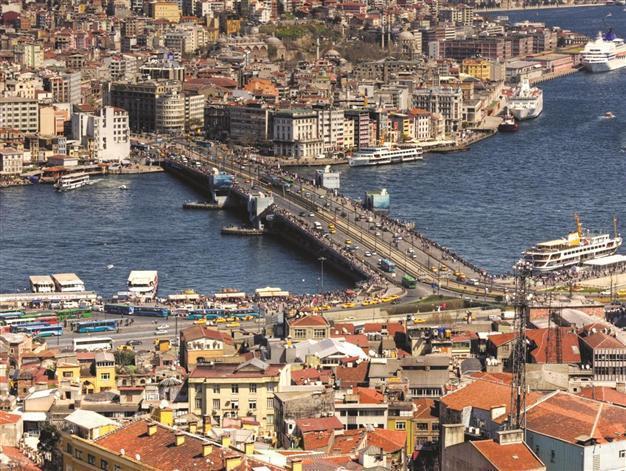Reference book introduces historical Istanbul buildings in English
ISTANBUL - Hürriyet Daily News

Written by architect Engin Yenal, the book , ‘A City: Istanbul 101 Buildings ‘ claims that a city like Istanbul can only be understood in its totality through a comprehensive understanding of its symbolic buildings.
Yapı Kredi Publishing House has recently published “A City:
Istanbul 101 Buildings,” a reference book giving elaborate architectural and historical information about 101 buildings making up Istanbul’s cultural wealth.
Written by architect and urban historian Engin Yenal, the book claims that a city like Istanbul can only be understood in its totality through a comprehensive understanding of its symbolic buildings, which play a chief role in constructing a city’s cultural identity.
“In getting to know and describing a city, we need to evaluate the symbolic communication between urban images and any symptomatic potential value. A degree of emotional and cultural eclecticism is involved when we sense or observe the urban environment; similarly the evaluation itself is relative. A given image may be observed differently by different people,” Yenal writes in the introduction to the book, adding, “Perceiving a city in its true identity; understanding, interpreting and describing it might require a long period of time,” as opposed to immediate sensorial comprehension, which is a faster process.
“Istanbul 101 Buildings” offers to provide its readers with the knowledge to facilitate a comprehensive understanding of the city in its diversity, with its entire cultural richness and historical package.
Buildings according to areasThe book separates Istanbul into historical sites and looks into historical wealth accordingly. Dividing the city into ten sections as “Within the Imperial Walls,” “Around Sultanahmet, “From the Golden Horn to Marmara Sea,” “Within the Walls,” “Outside the Walls,” “Northern Bank of the Golden Horn,” “Galata-Pera,” “Bosphorus (Rumeli - European side),” “Bosphorus (Anadolu – Asian side),” and “Üsküdar-Kadiköy.” This is due to the belief on the part of the book’s author that defining the iconic buildings of the city was only possible in the context of and their harmonious relationship with their location.
“In view of the historic perspective of urban development, it made perfect sense to begin with the original site of the first city; the acropolis of Byzantium, where the Ottoman palace was also located, inside the Imperial Walls. This starting point has connotations of extraordinary cultural wealth, not to mention parallels with narrative and descriptive forms employed since classical times,” Yenal notes in the introduction.
He also says the reason Sultanahmet and its environs was selected as the second area was with respect to the city’s direction of expansion. “The third is the urban area bounded by Atatürk Boulevard, corresponding to the road/edge concept that is preeminent among the elements forming the contemporary urban image.” According to the introduction, the fourth section is the area bordered by the Theodosian walls, and the fifth comprises the districts beyond the city walls including Eyüp.
“Selecting and ranking [the buildings] that qualify as true icons of the city required emotional as well as cultural discrimination. It was this discrimination that sometimes brought seemingly incompatible buildings alongside other, better-known ones, the first group including those that cannot be described as iconic in character.” Therefore, two urban landmarks identified with Byzantine and Ottoman cultures, the Hagia Sophia and the Süleymaniye Mosque, whose importance goes far beyond their symbolic significance, are deliberately omitted from the book.
Turkey,
